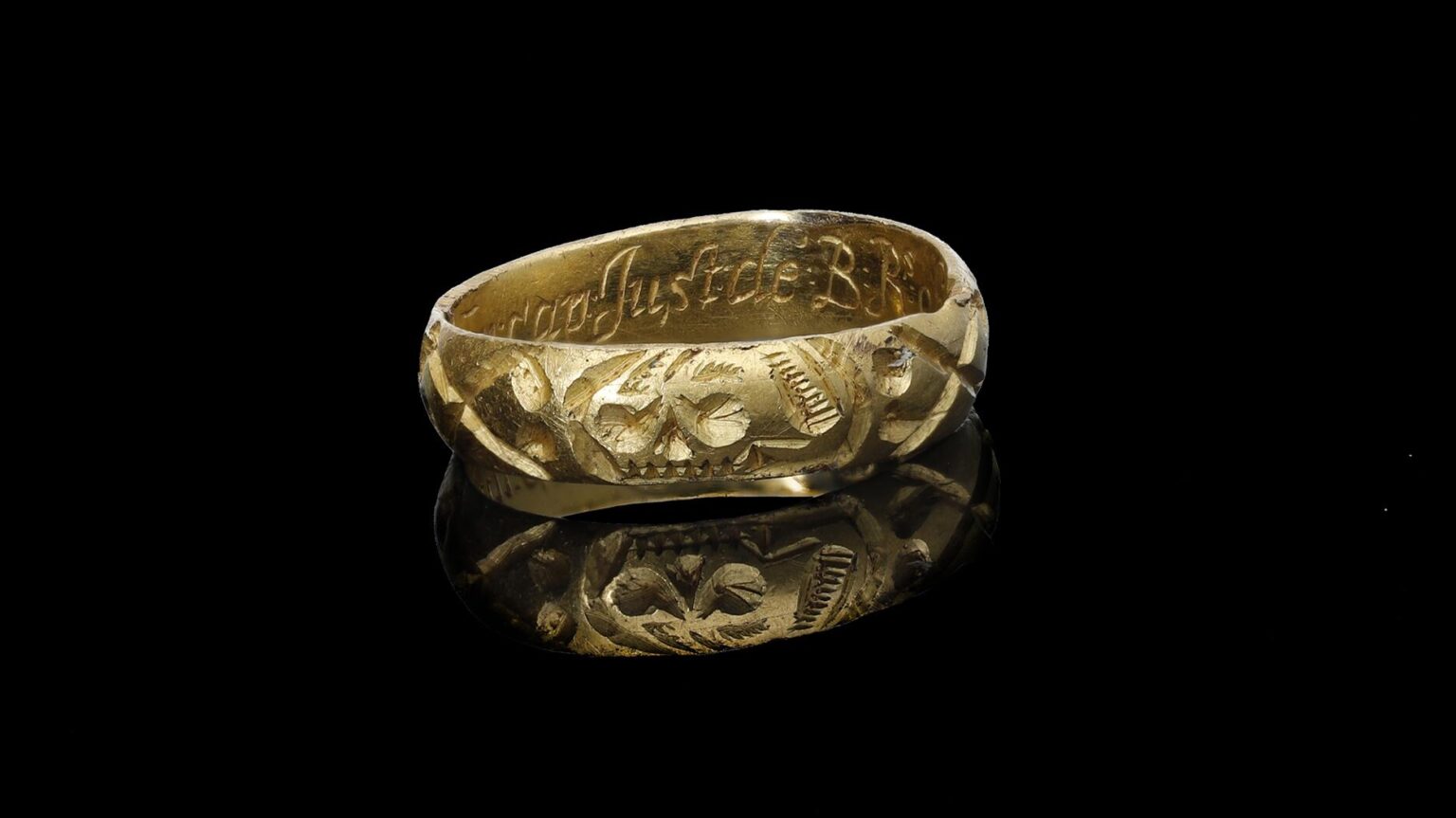Jewellery dating from the medieval and early modern periods, discovered by metal detectorists, featured in the Jewellery, Watches, and Objects of Vertu auction held by Noonans Mayfair on 27 March in London.
The sale included items of historical significance, such as a 17th-century memorial ring linked to a judge involved in England’s final witch trials, a medieval bishop’s sapphire ring, and a 13th–14th century gold posy ring.
Memorial Ring Linked to Witch Trial Judge Fails to Sell
A late 17th-century memorial ring, found by detectorist Steve Pulley in January 2020, was among the more historically significant lots. The piece, crafted in gold and bearing a skull and crossbones motif, was commissioned in memory of Sir Richard Rainsford, who served as Chief Justice of the King’s Bench and presided over some of England’s final witch trials.
The interior of the ring carries an engraved Latin inscription: “Richard Rainsford, Mile Nuper Cap Just De Banco Regis Obitus 17 Feb 80 Æt 76,” translated as: “Richard Rainsford, Knight, lately Chief Justice of the Court of the King’s Bench, Died 17th February 1680 aged 76.”
Despite its historical interest and an auction estimate of £6,000 to £8,000, the ring did not sell.
Medieval Bishop’s Sapphire Ring Achieves Above Estimate
A medieval gold ring set with a sapphire, associated with ecclesiastical use, was among the items sold. The ring was found by Mark Sell in 2019 and is believed to date to the late 12th or early 13th century.
Laura Smith, jewellery specialist at Noonans, commented on the typology of the piece:
“This form of medieval ring, with a principal cabochon stone, usually a sapphire, surrounded by smaller collet-set satellite stones (garnets or rubies, and emeralds), can be securely dated to the late 12th or early 13th century, and is associated with the bishopric.”
The ring features a hexagonal cabochon sapphire in a closed-back collet setting, framed by four smaller cabochon garnets and emeralds. It sold for £19,000, exceeding its pre-sale estimate of £15,000–£18,000.
Gold Posy Ring Reflecting Medieval Romantic Tradition Finds Buyer
A 13th to 14th-century gold posy ring, uncovered in March 2024 by Richard Girling, also found a buyer. These rings typically featured short inscriptions and were worn with the text on the inside, next to the skin.
The inscription on this example, written in a mix of Roman and Lombardic script, reads “+IO.VVS.AIM.PAR.FEI,” interpreted as “I love you by faith” or “I love you faithfully.”
Smith commented:
“Romance and jewellery have always been closely entwined, and during the medieval period it became popular to inscribe a short love message or ‘post’ on a gold ring to be given to your beloved. The intimacy is enhanced by the fact the message is worn right next to the skin and is really just for the wearer to behold.”
This ring sold for £11,000, above its estimate of £6,000 to £8,000.
Industry Context and Implications
The Noonans auction reflects current demand for jewellery with historical provenance, particularly items that can be securely dated and interpreted. While some items did not sell, others achieved results above their estimates, indicating interest in early jewellery with identifiable historical associations.
Finds by metal detectorists remain a source of historic jewellery entering the secondary market, where they attract attention from collectors and institutions.



